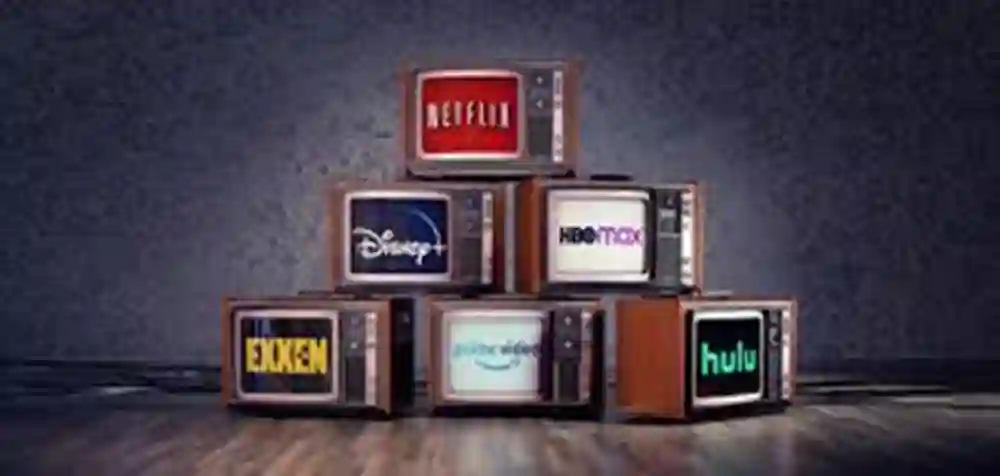
How Streaming Services Are Changing the Entertainment Industry
Streaming services have dramatically transformed the entertainment industry, reshaping how people consume content, interact with media, and even produce films and television shows. These platforms, which allow users to access content on-demand over the internet, have gained significant momentum in recent years, surpassing traditional forms of entertainment such as cable TV and movie theaters. This article will explore how streaming services are changing the entertainment landscape and the profound impact they have on both audiences and the industry at large.
The Rise of Streaming Services
Streaming services like Netflix, Hulu, Amazon Prime Video, and Disney+ have completely revolutionized how people watch movies and TV shows. Before streaming became widespread, consumers were dependent on scheduled TV broadcasts, cable subscriptions, and physical media like DVDs and Blu-ray discs. Now, platforms offer vast libraries of content that users can access anytime, anywhere, as long as they have an internet connection. The convenience factor is one of the key drivers behind the rise of streaming services. With a subscription, viewers can watch their favorite shows and movies from their smartphones, laptops, tablets, and smart TVs without needing to adhere to broadcast schedules. This flexibility has led to a surge in demand for streaming services, and many consumers are cutting the cord, choosing streaming over cable TV.Impact on Traditional TV Networks and Movie Theaters
The shift toward streaming services has had a profound effect on traditional TV networks and movie theaters. Cable subscriptions have been in steady decline, a trend accelerated by the appeal of streaming platforms’ affordability and convenience. As of recent years, many consumers have opted for on-demand services that allow them to access content when they want, skipping traditional broadcast advertisements and relying on subscription models that often cost less than cable bundles. Additionally, movie theaters are feeling the pressure from streaming services. The pandemic accelerated this trend, with many films being released simultaneously on streaming platforms and in theaters. Studios like Warner Bros. adopted a hybrid release model, where movies like Wonder Woman 1984 premiered both in theaters and on HBO Max. This not only made films more accessible but also introduced a new way of experiencing cinema that doesn’t rely on the theatrical window. Even as theaters reopen post-pandemic, streaming services are continuing to reshape movie distribution. Many studios are now opting to release films directly on streaming platforms, bypassing the traditional theatrical release altogether. This has particularly been the case with films that are expected to generate more interest in home viewing rather than in cinemas, such as children’s films and smaller-budget productions.The Changing Economics of Content Creation
One of the most significant ways that streaming services are changing the entertainment industry is through their influence on content creation. With the demand for on-demand, original programming at an all-time high, streaming services have become key players in the production and distribution of TV shows and movies. Platforms like Netflix and Amazon Prime Video are investing billions of dollars into producing original content, including films, documentaries, and series. This has led to the creation of some of the most successful and critically acclaimed television shows and films of the past decade. Examples include Stranger Things (Netflix), The Marvelous Mrs. Maisel (Amazon Prime), and The Mandalorian (Disney+), all of which have garnered large fan bases and contributed to the ongoing success of these streaming platforms. Streaming services’ focus on creating original content has sparked a new era in the entertainment industry, with talent flocking to these platforms for new opportunities. Film and TV creators now have more freedom to experiment with different formats, storytelling techniques, and genres without the constraints often imposed by traditional networks and studios. This has led to a wider variety of content being produced, which appeals to a more diverse global audience.Global Reach and Accessibility
Streaming services have also broadened the scope of global entertainment consumption. Unlike traditional TV networks that are often limited by geographical boundaries, streaming platforms can deliver content to almost any corner of the world. This has allowed for an influx of international content that was previously unavailable in certain regions. Foreign films and TV shows, such as the popular South Korean series Squid Game, have gained worldwide recognition thanks to the global reach of platforms like Netflix. Additionally, streaming services are not just exporting content from Hollywood. Platforms like Amazon Prime Video and Netflix have invested heavily in producing and distributing international content, making it accessible to viewers around the globe. This global content exchange has created a more diverse entertainment ecosystem, with content now being tailored to specific regional tastes while still appealing to a worldwide audience.The Rise of Subscription-Based Models
The subscription model employed by streaming services is another factor contributing to their success. Traditional television relied heavily on advertising revenue, with networks broadcasting shows and interrupting them with commercials to fund the production of content. However, with streaming services, viewers pay a subscription fee in exchange for ad-free access to content. This model has reshaped how entertainment is monetized, and many other sectors of the entertainment industry have adopted similar subscription-based approaches. Music streaming platforms like Spotify and Apple Music have popularized the subscription model, and now even video games are seeing a shift toward subscription services such as Xbox Game Pass and PlayStation Plus.The Future of Streaming Services
As the landscape of entertainment continues to evolve, streaming services will likely remain at the forefront of this change. The competition between platforms is intensifying, with companies constantly expanding their libraries, introducing new features, and acquiring exclusive rights to content. The future of streaming is likely to include more immersive experiences, such as virtual reality or interactive content, allowing for an even more personalized and engaging entertainment experience. Moreover, the increased integration of artificial intelligence and machine learning will enable streaming services to further refine their recommendation algorithms, ensuring that users receive content that best suits their preferences.Conclusion
In conclusion, streaming services are reshaping the entertainment industry in profound ways. They are changing how we watch TV and movies, influencing content creation, and offering global access to a diverse range of programming. As the entertainment world continues to adapt to this digital transformation, streaming services are poised to remain central to how we consume media in the years to come. With their flexibility, affordability, and expansive content libraries, streaming platforms are undoubtedly the future of entertainment.Read More latest Posts
- Lovely Songs About Sons That Celebrate A Mother Father Bond
- Logos Definition Literature Explained with Clear Examples
- Songs About Working Hard That Keep You Inspired Every Day
- Max Baer Age 103 Milestone: Legendary Actor’s Amazing Life Journey
- Jake Paul Age Truth Revealed – The YouTube Boxer’s Real Birthdate

